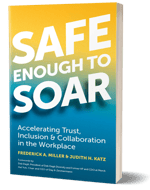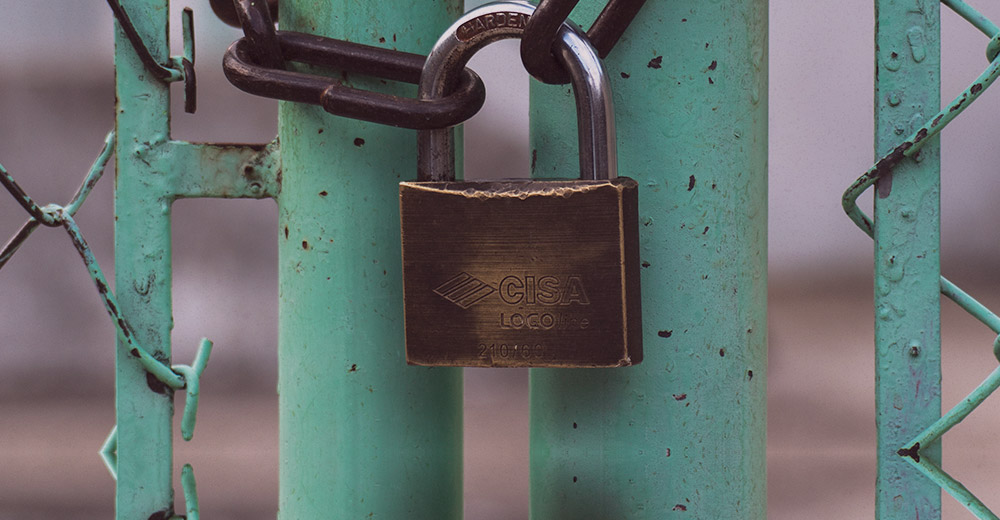We have worked with clients for over four decades creating inclusive workplaces that leverage everyone’s talents and enable each person to make their strongest contributions. In this work, one thing has become abundantly clear to us: organizations need everyone’s thinking and skills in order to solve today’s complex problems.
If organizations are only as productive as the interactions that take place between individuals and teams then the question is: how do we encourage the best interactions? The answer is that organizations must deliberately and consciously create an environment in which interaction safety is a way of life.What is interaction safety?
When interaction safety is a priority, people trust their colleagues and feel there is an open environment in which people can speak up, bring different points of view to the conversation, and share half-baked ideas that others will build upon. People feel the freedom to bring new ideas to their team and their organization; they feel the freedom to take risks; they feel the freedom to be their best selves. As a result, there are more collaborative interactions that can directly affect increased innovation.
When interaction safety exists, the following standards are the baseline assumptions:
- We’re all on the same team and the same side.
- All team members have the intention and the competence to add value.
- The best solutions are those that consider all angles and incorporate all relevant perspectives.
- The best route to success is building on one another’s ideas rather than tearing them down.
- We can achieve more together than we can alone.
The four levels of interaction safety
In our work and in our latest book, Safe Enough to Soar: Accelerating Trust, Inclusion and Collaboration, we have identified four levels of interaction safety, which we see as a developmental process. Organizations don’t just have interaction safety because they wish for it; it takes deliberate leadership and action. With accountability and vigilance, it is possible. Below are the four levels of interaction safety.
These levels should inspire you to ask yourself, where are you? Where is your organization? From this place, you can begin to chart your own path toward creating an environment filled with interaction safety.
-
Level One: On your Own
In a Level One organization, there is little focus on interaction safety. In fact, there might be just the opposite. People may experience behaviors that range from bullying to verbal or physical harassment and abuse to less overt actions of sarcasm, ridicule, and put-downs. In a Level One organization, people are basically on their own, trying to survive with little support or recourse. -
Level Two: Lip Service
A Level Two organization has some focus on interaction safety. The organization may begin to recognize that it is important but does little to make it a reality in the interactions between people or those in leadership roles. The Level Two organization may say that interaction safety is important, but there is little training or enforcement to support it. When an incident does occur, it is addressed as a “one-off” situation with little real change or problem-solving to get to the root cause. -
Level Three: Islands of Safety
Level Three organizations place a great deal of focus on creating interaction safety and are actively working toward making it a reality. However, the practices are not evenly distributed throughout the organization, and while some in the organization may experience interaction safety within a team or department, it is still not the norm. The organization is actively working to make interaction safety a norm by providing training and tools, but not all the leaders are on board. -
Level Four: Way of Life
A Level Four organization understands that interaction safety is critical to organizational success. However, while people experience interaction safety that enables them to feel the freedom to engage, they also recognize that constant effort is needed to maintain that level of trust and engagement. This cannot be taken for granted. The organization is focused on ensuring that interaction safety is sustained and is constantly working to improve the culture to enable individuals and the organization to soar.
Given these four levels of interaction safety, where is your organization today, and are you ready to take it to the next level?
 Fueled by her passion for addressing systemic barriers and known for her boundless energy and sharp analytical mind, Judith Katz brings over 30 years’ experience to her work in strategic culture change as Executive Vice President of The Kaleel Jamison Consulting Group, Inc. Her latest book, co-authored with Frederick Miller, is called Safe Enough To Soar: Accelerating Trust, Inclusion, and Collaboration in the Workplace. Find out more here.
Fueled by her passion for addressing systemic barriers and known for her boundless energy and sharp analytical mind, Judith Katz brings over 30 years’ experience to her work in strategic culture change as Executive Vice President of The Kaleel Jamison Consulting Group, Inc. Her latest book, co-authored with Frederick Miller, is called Safe Enough To Soar: Accelerating Trust, Inclusion, and Collaboration in the Workplace. Find out more here.




